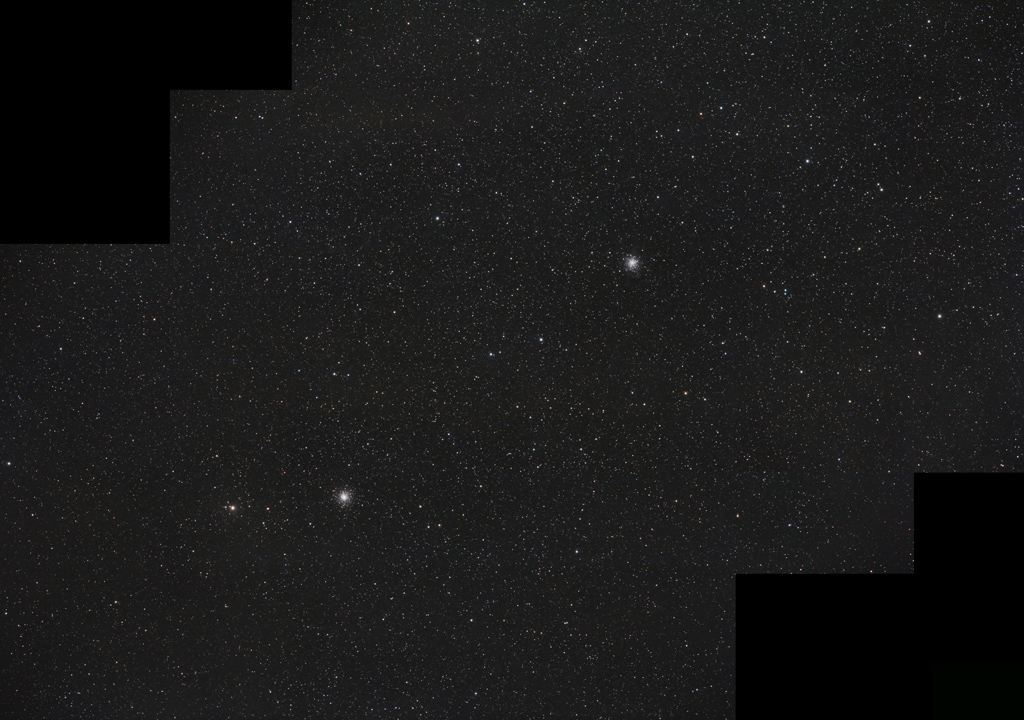 |
CHAMÄLEON + ONJALA OBSERVATORY DeepSky | SITEMAP HOME CHAMÄLEON |
|
 |
|||
| « back to overview widefield | Load higher resolution (1800 x 1200 Pixel 3500 x 2400 Pixel) | Object description |

The globular cluster Messier 10 lies at a distance of about 14,500 light years from the solar system. It orbits the Milky Way in an orbit of about 140 million years. Every 53 million years it crosses the plane of the Milky Way. Thereby it slowly moves away from the solar system
With an apparent diameter of about 20 arcminutes it has a real diameter of about 83 lightyears. It is classified as type VII according to the Shapley-Sawyer catalog, its mass is estimated at 200,000 solar masses.
Messier 10 was discovered by Charles Messier on May 29, 1764 and described as a "nebula without stars in the belt of Ophiuchus".
 |
Messier 12 With about 250,000 solar masses M12 belongs to the larger globular clusters and to the inner galactic halo. It also lies in the sky in the constellation Ophiuchus, not far from M 10 and is a slightly larger twin of Messier 10. With an apparent diameter of 13 arcminutes, this corresponds to a real diameter of about 75 light-years at a distance of 16,000 light-years. It is classified as type IX according to the Shapley-Sawyer catalog. This means that its member stars are relatively loosely concentrated toward the center for a globular cluster. Compared to its neighbor Messier 10 (Class VII), M12 is much less dense towards the central region. « Click here or the thumbnail to load a large annoted image and a size comparison to the full moon. |
 |
 |
 |
 |
 |
 |
 |
| Sun | Moon | Solar System | DeepSky | Widefield | Miscellaneous | Spec. Projects |